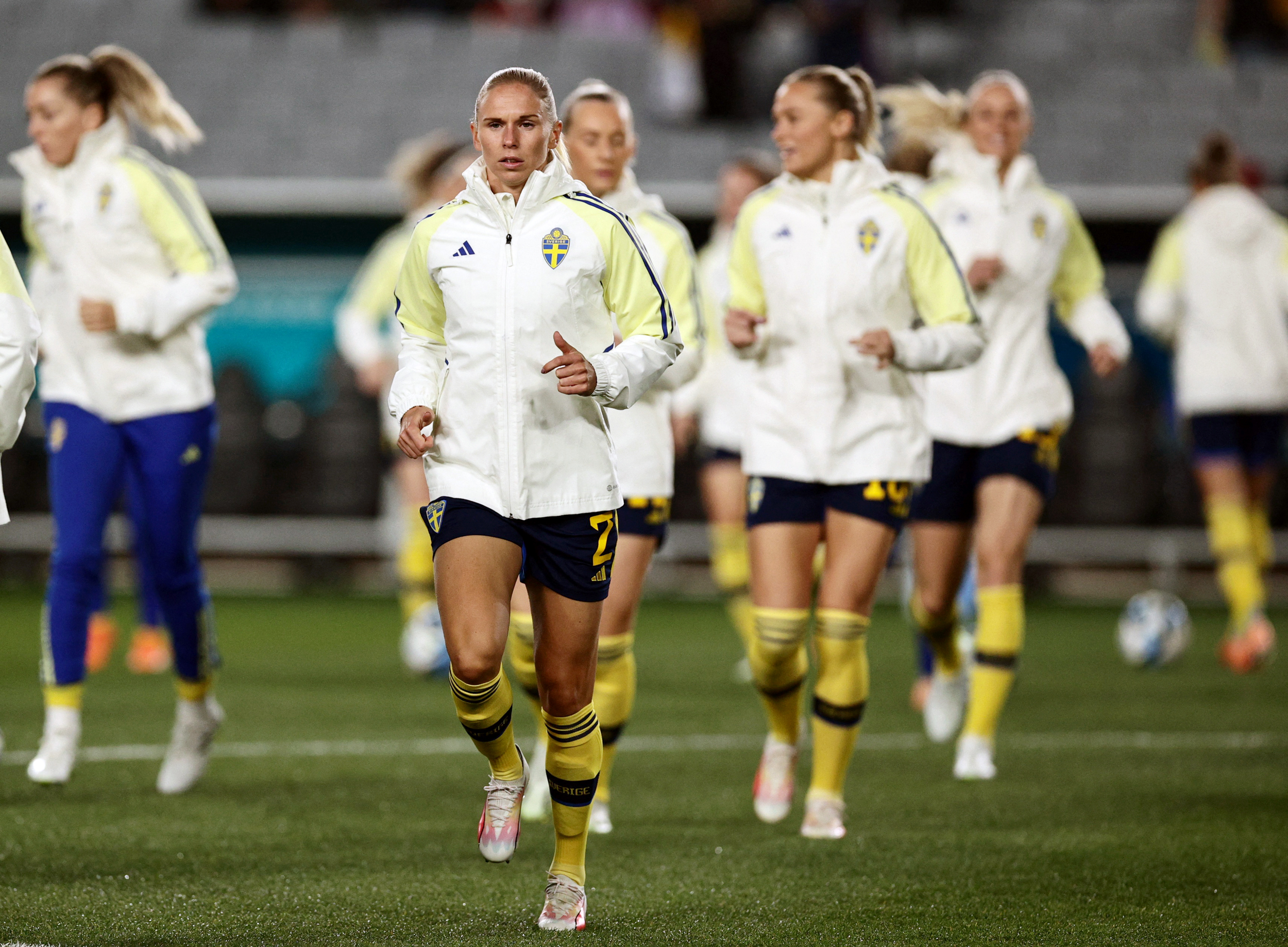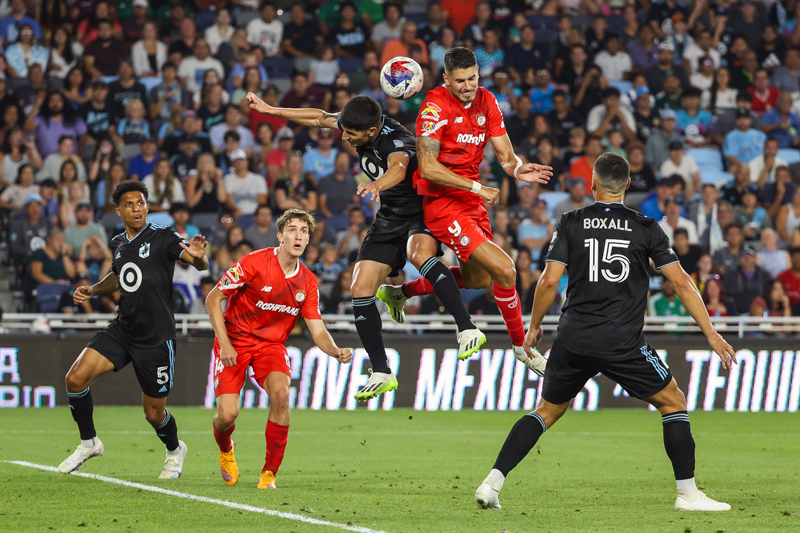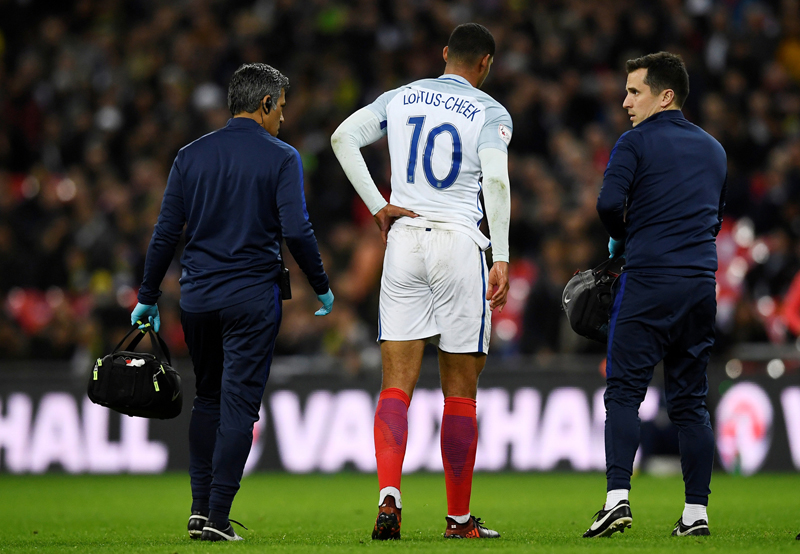You are viewing 1 of your 1 free articles. For unlimited access take a risk-free trial
Soccer performance: getting your warm-up in order
How should soccer players sequence the elements of a pre-match warm up for optimum performance? SPB looks at new research
Soccer is a demanding sport, characterized by numerous high-intensity challenges such as repeated accelerations and decelerations, changes of direction, and explosive jumping or kicking the ball. Research shows that in the course of a match, soccer players typically cover a total distance of 10–13km, with nearly 200m of that distance covered at maximum sprint speeds (30+kmh) and over 500m using high-speed running (21–24kmh)(1). Given these facts, a pre-match warm-up is considered a key strategy for success in soccer programs, which in turn means that optimizing it should be a high priority for soccer players and their coaches(2).
Warm up components
A warm up is not only to prepare the player physically for the intense work ahead and to protect players from injury, but also to produce positive psychological effects such as self-confidence and concentration. Many professional soccer teams follow warm up guidelines provided by programs such as FIFA 11 +, which typically include running, static and dynamic stretching, activities to prevent injury, high-intensity performance and post-activation exercises, and skill exercises with specific tactical objectives(3). The aim of these warm ups is to progress from less specific tasks aimed at producing the required physiological changes (increased core and muscle temperature, improved blood oxygenation etc) to more game and skill specific tasks (eg ball passing and dribbling, heading and shooting)(4)
Structuring a warm up
There’s been much research into warm up design, particularly the duration and intensity of the warm up (see this article for a more detailed discussion). However, what has been widely accepted is that a warm up should progress from less specific to more game-specific tasks. Taking a typical warm up example, this would involve in the following order:
1. An aerobic phase, comprising of jogging, running and mobility exercises (eg skipping) as well as dynamic stretching focused on lower limbs.
2. A neuromuscular phase, including strengthening (eg half-squats) and balance exercises.
3. A velocity phase comprising of linear sprints and non-linear sprints over several distances.
4. A ball-specific phase, including passes over several distances and a very brief 5-a-side game.
New research
Remarkably, this assumption on the ideal structure and particularly the sequencing of a soccer warm up has never been comprehensively tested. But now a new study on this topic by a team of Spanish and Saudi researchers has just been published in the journal ‘PeerJ – Life and Environment’(5). The purpose of this study was to analyze the effects of three different pre-match warm-up structures on the physical condition and readiness of male professional soccer players – in particular to investigate whether the order of the exercises performed during the warm-up can have significant differences in ratings of perceived exertion (RPE) and match performance.
Seventeen male professional soccer players, all from a Tunisian Professional Soccer League team, participated in this study. On three different occasions and in a randomized order, all the players performed a typical pre-match warm-up containing the same components: an aerobic phase, a neuromuscular phase, a velocity phase and a ball-specific phase. More specifically these consisted of:
· Aerobic - comprising jogging (4 minutes), running and mobility exercises (4 minutes) as well as 2 minutes of dynamic stretching focused on lower limbs.
· Neuromuscular phase – comprising of half-squats (2 minutes) and balance exercises (2 minutes).
· Velocity phase - comprising linear sprints over 5 and 10 metres (two sprints with 30 seconds of rest) and non-linear sprints (two sprints with 30 seconds of rest).
· Ball-specific phase – totalling 8 minutes, including passes over distances of 5m to 35 m (for 4 minutes) and small sided game play (2 x sessions of 90 seconds with 60 seconds recovery in between).
What differed in these three pre-match warm ups however was the order in which the warm-up components were executed. These were as follows:
· Warm up A – Aerobic ð Neuromuscular ð Velocity ð Ball skills (conventional sequence)
· Warm up B – Aerobic ð Ball skills ð Neuromuscular ð Velocity
· Warm up C – Aerobic ð Velocity ð Ball skills ð Neuromuscular
Each player performed these three warm up types on three different occasions and players were randomized as to which order they performed them (ie whether it was ABC, ACB, BCA, BAC, CAB, or CBA). Following each warm up, the players underwent a battery of tests consisting of: a linear sprint test, a countermovement jump test, a 15-metre ball dribbling agility test, a ball shooting test and a subjective load measure (ie rate of perceived exertion) conducted by questionnaire. The results were then compared and contrasted.
What they found
In terms of performance and subjective effort (perceived exertion), there was no difference between warm up sequence A (the conventional sequence), and warm up B, where ball skills were brought forward and carried out immediately after the aerobic phase. However, warm up C proved to be markedly superior to both A and B because it produced higher ball velocities when kicking and resulted in less perceived exertion when carrying out the battery of tests. In addition, warm up C resulted in improved ball agility (dribbling) and jumping performance (assessed by a countermovement jump test) compared to the conventional A or B warm ups.
Implications for soccer players and coaches
The warm up sequence C (Aerobic ð Velocity ð Ball skills ð Neuromuscular), where the strength exercises were placed at the end, was superior in terms of increasing ball speed (kicking power), ball agility, jumping ability and less perceived exertion – but why? This is almost certainly due to a performance enhancement phenomenon known as ‘post-activation potentiation’, where an increase in maximal strength production is observed shortly after prior high muscle activation demands (see this article)(6).
Although no data was available for how the different warm ups affected different playing positions, these results are fascinating and point the way forward for players and coaches on how players can maximize warm up benefits. Specifically, ending a pre-match warm-up with a neuromuscular (strength) phase seems help players improve ball speed, ball agility and jumping performance. Moreover, there seems to be no performance downsides of using sequence C rather than sequence A, which suggests that at the very least, players and coaches could do worse than switching to sequence C and trying it for themselves!
References
1. Biology. 2022;11(6):867. doi: 10.3390/BIOLOGY11060867
2. International Journal of Environmental Research and Public Health. 2021;18(24):13351
3. PLOS ONE. 2021;16(5):e0251839
4. Biology of Sport. 2023;40(1):321–329.
5. PeerJ. 2023; 11: e15803. Published online 2023 Aug 3
6. Frontiers in Physiology. 2019;10:1359
Newsletter Sign Up
Testimonials
Dr. Alexandra Fandetti-Robin, Back & Body Chiropractic
Elspeth Cowell MSCh DpodM SRCh HCPC reg
William Hunter, Nuffield Health
Newsletter Sign Up
Coaches Testimonials
Dr. Alexandra Fandetti-Robin, Back & Body Chiropractic
Elspeth Cowell MSCh DpodM SRCh HCPC reg
William Hunter, Nuffield Health
Keep up with latest sports science research and apply it to maximize performance
Today you have the chance to join a group of athletes, and sports coaches/trainers who all have something special in common...
They use the latest research to improve performance for themselves and their clients - both athletes and sports teams - with help from global specialists in the fields of sports science, sports medicine and sports psychology.
They do this by reading Sports Performance Bulletin, an easy-to-digest but serious-minded journal dedicated to high performance sports. SPB offers a wealth of information and insight into the latest research, in an easily-accessible and understood format, along with a wealth of practical recommendations.
*includes 3 coaching manuals
Get Inspired
All the latest techniques and approaches
Sports Performance Bulletin helps dedicated endurance athletes improve their performance. Sense-checking the latest sports science research, and sourcing evidence and case studies to support findings, Sports Performance Bulletin turns proven insights into easily digestible practical advice. Supporting athletes, coaches and professionals who wish to ensure their guidance and programmes are kept right up to date and based on credible science.











